Photo
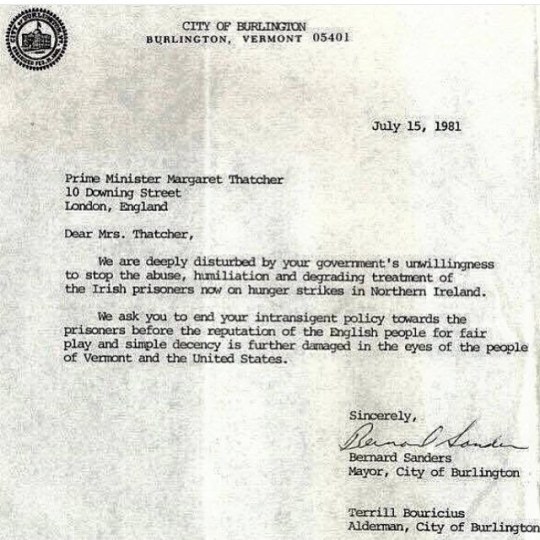
Thank you Bernie for being down with the struggle from way back. #ripBobbySands #maggiewasafuckingtwat #tiocfaidhárlá
2 notes
·
View notes
Link
Cool article about medieval restoration. I think it's always important for restoration to reflect reality, whatever point in its existence a building, work, or book is being restored to, rather than to restore something in the fashion of Carcassone, which looks very nice but isn't accurate to its actual appearance in the middle ages.
3 notes
·
View notes
Text
When I read the parts of A Dance With Dragons about the Golden Company, I picture Harry Strickland as Buck Strickland from King of the Hill.
4 notes
·
View notes
Text
Might have to start watching Game of Thrones again to see this.
IAN MCSHANE IS ON GAME OF THRONES IN AN UNKNOWN ROLE NEXT SEASON
Guys. GUYS. Euron Crow’s Eye.
37 notes
·
View notes
Photo
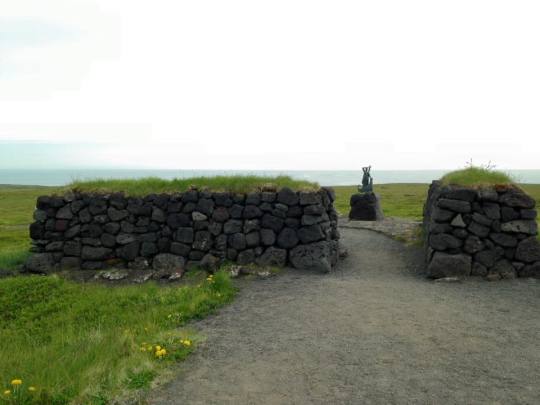
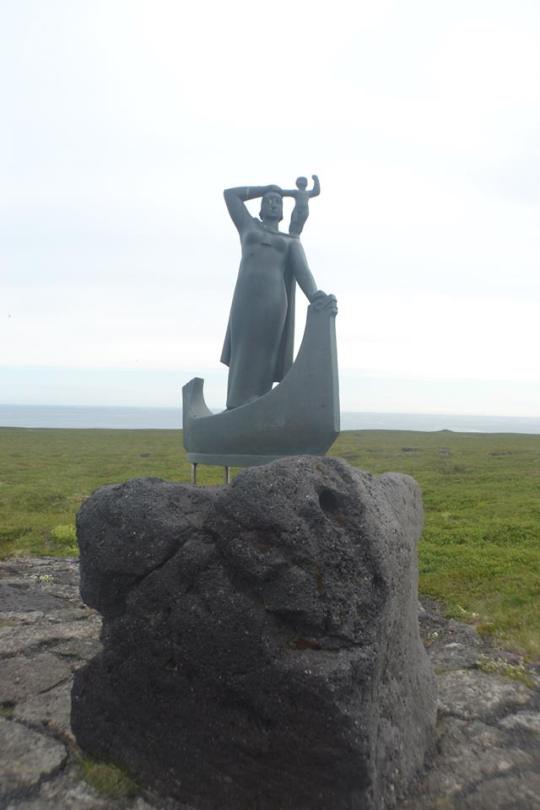
And when Karlsefni was dead, took Gudrid the management of the house with her son Snorri, who was born in Vinland. But when Snorri was married, then went Gudrid abroad, and travelled southwards, and came back again to the house of Snorri her son, and then had he caused a church to be built at Glaumbæ. After this, became Gudrid a nun and recluse, and remained so whilst she lived. —from the Saga of the Greenlanders
This is a memorial to Guðríður Þorbjarnardóttir on the southern coast of the Snæfellsnes peninsula in western Iceland, outside the town of Hellnar near the homestead where she lived in Iceland. Guðríður, who appears in the Saga of Eirik the Red and the Saga of the Greenlanders, known together as the Vinland sagas, was the mother of the first child of European descent born in North America, and was probably the most traveled woman in Icelandic history before the modern era, having made a pilgrimage to Rome after returning from Vinland. I had no idea this memorial existed before my wife and I drove by it on our honeymoon earlier in July, and it was a really exciting thing to stumble on. It’s nice to see something that celebrates a woman’s contribution in history (even if it is mainly acknowledging her giving birth to a man), and the Icelandic appreciation for medieval history and literature always makes me happy.
2 notes
·
View notes
Photo
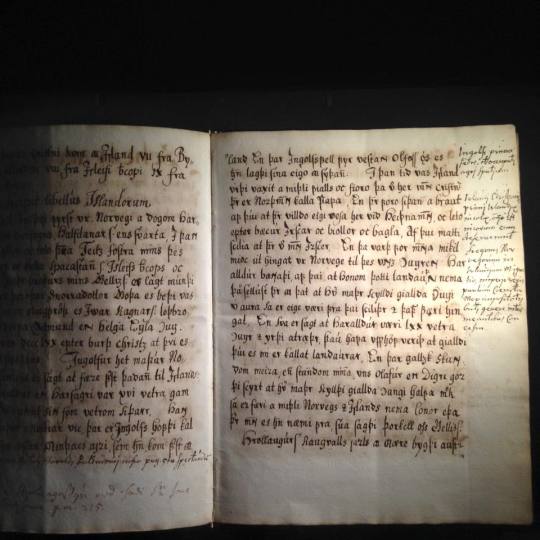

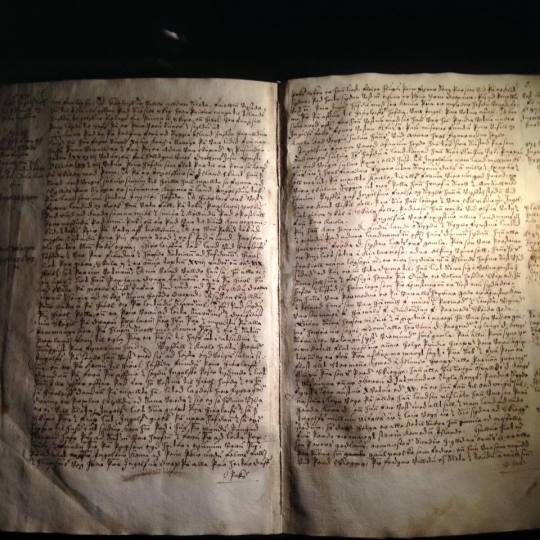
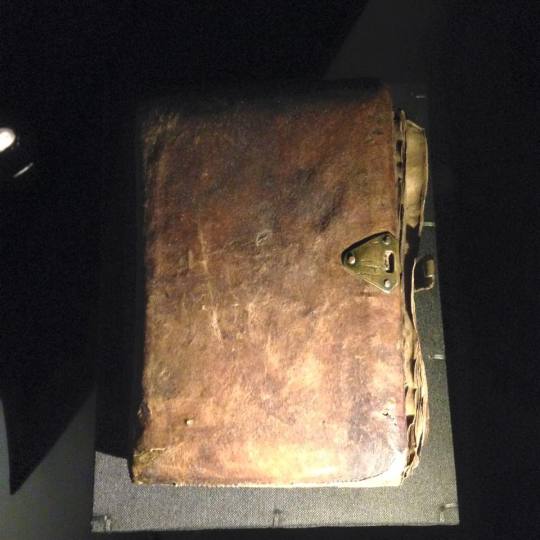

My wife and I spent five days in Iceland recently as part of our honeymoon. This was my second time there, and I was lucky that these manuscripts are on display at the Settlement Exhibition 871+/-2 in Reykjavik. The museum is built around the actual site of a settlement dated to the 9th century and uses the excavated foundations, artifacts found at the site, and a lot of interactive technology to bring visitors into the settlement period and really imagine the lives of the people who lived in the site as accurately as possible. The Settlement Sagas are a special exhibit, which really helps to show the development of Iceland from the colonisation of an uninhabited island to a modern society governed by written laws.
From top to bottom:
Íslendingabók, 17th century manuscript: The more factually reliable of the sagas telling the story of Iceland's settlement. The saga was originally written in the 12th century but no manuscripts from earlier than the mid-17th century have survived.
Kjalnesingasaga, late 15th century manuscript: A saga describing the lives of early settlers and their descendents in Kjalarnes, north of Reykjavik
Landnámabók, 17th century manuscript: Another account of the settlement of Iceland. It was probably written originally in the 12th century, but the earliest existing copies date to the late 13th century and 14th century. Although it covers the same period and subject as the Íslendingabók, the Landnámabók is usually considered the less reliable of the two.
Jónsbók, 14th century codex: This is the law code that governed Iceland after it came under Norwegian rule in the 1260s. This codex is one of the earliest preserved copies.
A 1615 Deed of Purchase of Reykjavík: This contract documents the sale of an Icelandic widow's share of Reykjavík to the Danish king in exchange for other property in Iceland. Jónsbók, pictured above required contracts with seals affixed to verify large transactions.
All on display at the Settlement Exhibition 871+/-2 in Reykjavík.
19 notes
·
View notes
Photo
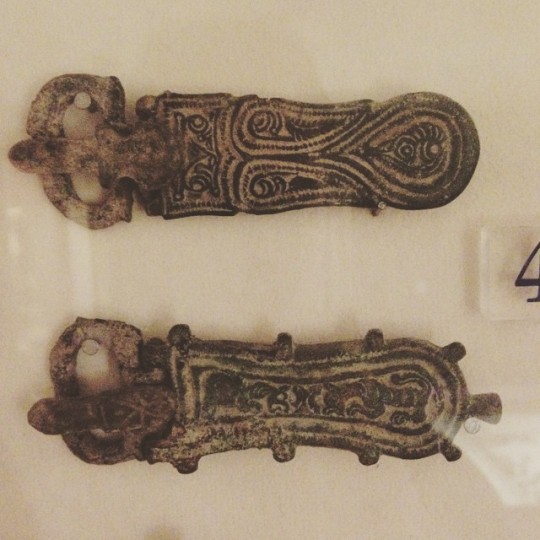
Got to see some #Visigoth artifacts! The Visigoth Kingdom was a romanized Germanic successor state to the Western Roman Empire that ruled the former province of Hispania during the Migration Period from the early 5th through early 8th centuries CE before falling to the Islamic Umayyad Caliphate. The Migration Period is one of my favorite eras of history and these belt buckles might be the only things from that time I get to see in Spain! (at Museo Lara Ronda)
2 notes
·
View notes
Photo

Nyhavn, Købnhavn. Had a few hours to leave the airport and see a bit of the city on a layover on the way to Madrid.
1 note
·
View note
Text
Boom!
Side note: it kind of bugs me when people talk about the Balyrians creating dragons through "genetic experiments" and stuff like that. This is fantasy and they did it with blood magic, not science.
The World of Ice and Fire thoughts: What We Talk About When We Talk About the Deep Ones
One of the few benefits of having an old hooptie of a laptop on which I can no longer record the Boiled Leather Audio Hour is that I’ve been forced by this exigency to sit around thinking and reading about The World of Ice and Fire instead of jawing about it. (I did write about it some for Rolling Stone, which now means that Matt Taibbi works for a publication that has told its readers about Yi Ti.) Naturally, given my well-established interests, my attention has largely focused on the Deep Ones.
In case you haven’t been following along with the discussion, in essence: there very likely is, or was, a Lovecraftian race of fish-people in the almost unimaginably distant past of the world of Westeros and Essos called the Deep Ones, who built enormous structures using oily black stone and apparently warred with another protohuman race before disappearing into the abyss of history. On Westeros, they appear to have had a hand in building the Seastone Chair on Pyke and the base of what would become the Hightower in Oldtown centuries later. The labyrinthine architecture of the Hightower’s base recalls the ruinous labyrinths of Lorath, attributed to an extinct race called the mazemakers who, according to Lorathi legend, were destroyed by a race from the sea. The black-stone construction of the Seastone Chair and the base of the Hightower is also evident in the enormous idol that gives the Isle of Toads in the Basilisk Isles its name; the people of that island have fishlike facial features and webbed digits. This in turn is reminiscent of the green-skinned people of the Thousand Islands, which is said to be the last remnant of an ancient sea empire that carved statues of its gods that can only be seen when the tide recedes. Two entire, terrible cities are built from the oily black stone, it’s said: Yeen, an uninhabitable city on Sothoryos built from stones too large to move, where plants don’t grow and no one appears to survive very long; and infamous Asshai, a place of similarly ill repute (though this one, at least, is populated by evil magicians) and similarly inhospitable to life.
(Note: While I spotted many of these references on my own, they’re mixed up with enough references gleaned from enough different sources that I no longer can remember which was which, though this reddit thread’s a decent place to start, as is this westeros.org thread; meanwhile, tumblr user presidentobarna submitted some Asks that alerted me to be on the lookout for this stuff before I got there on my own in my read-through.)
So. In my Rolling Stone piece, I made the argument that TWoIaF posits the existence of a third strain of magic quite apart from the northern/ice and eastern/fire strains, a water-based magic most prominently seen in the Rhoynish “water wizards” who worshipped enormous river turtles and raised waterspouts capable of drowning dragons mid-flight. (I’ve seen some commenters argue that you can actually identify fire, ice, water, air, and earth magics, but this is getting a little too mana-class for my tastes, and likely for Martin’s giving his expressed opinions about “magical systems.”) My argument is that there’s an implicit connection with the gods of sea and storm who factor into the creation myths of the Stormlands and the Iron Islands. In our podcast on the Rhoynish excerpt I additionally argued that the strange phenomenon Tyrion and his crewmates encountered at the Bridge of Dream, where they somehow sailed past the same point twice without ever turning around, is an artifact of this defunct strain of magic, as is greyscale on some level. You could include krakens and sea dragons. You could include the myth of the merlings, the faith of the Drowned God, the superstition of the squishers on the Fingers, the legends of walrus skinchangers on Far Isle in the Iron Islands. You could include Patchface and his prophecy/ies, maybe. As mentioned above, you could include a bunch of stuff that doesn’t seem particularly aquatic but is without a doubt “eldritch” and at any rate built from oily black stone, like Asshai and Yeen. You could include similarly Lovecraftian phenomena, like the Old Ones of Leng alleged to dwell in immense subterranean cities, like the Black Goat of Qohor (Shub-Niggurath, basically), like the rumored nightmare cities of K'dath and Stygai. You could include similarly protohuman or parahuman races, like the Ibbenese or the Brindled Men or, most relevantly if the accounts be accurate, the people of the Thousand Islands, to say nothing of the giants and the children of the forest and the Others, legends of all three of which extend in one form or another around the known world.
You could include a lot of things.
But what should you include? And what conclusions should you draw? And what theories should you establish?
Well. As someone I can’t quite remember—could have been stannisisthefury, could have been Steven Attewell—argued recently, you should take these things literally. Martin prefers fantasy to reality, and has always been vocal about that no matter the fame and acclaim he has garnered for injecting the latter into the former. The castles are bigger, the spices are bolder, the maesters are wrong, the magic is real, the Deep Ones lie dreaming. That, more than anything else, is the fundamental difference between the world of ice and fire and our own—the commonalities in cultural legendaria we would ascribe to evolutionary biology, to the collective unconscious, to any number of scientific and psychological realities, are here best understood as reality realities. So I think we can set aside the debate as to whether or not the Deep Ones are/were real as settled. Yes, they are/were.
But do we need to make sense of their presence? Here’s where it gets much trickier. Martin is a child of Tolkien, and as much as he’ll detail his inferiority to his ancestor to every Middlesex village and farm (here’s his interview with Salon co-founder Laura Miller just by way of a for instance) the temptation is still to understand his every move and feint and implication as WORLD-BUILDING. Surely there is a way to figure out THE FACTS about the Deep Ones, the Old Ones, the Maze-Makers, Asshai, Leng, Yeen, Lorath, the Five Forts, the Hightower, the Seastone Chair, the Isle of Toads…?
Eh.
Because Martin is not just the child of Tolkien. He’s not even just the child of Lovecraft, or of his predecessors and peers and imitators. (And by the way, how to reconcile Lovecraft’s intense, almost literally deranged racism with the quality of his work? To the extent that his preposterously visceral repulsion by ethnic groups other than this own and those his chosen peers informs his writing, can it be interpreted as the source of his genius in depicting soul-withering cosmic horror, or as a lethal fault of it? And how do we square this with the sub/parahuman races of the Ibbenese and the Brindled Men and so forth in a work so clearly indebted to the weird fiction Lovecraft exemplified? Anyway) He has one more father.
Martin is the child of Howard.
I’ve read all of Robert E. Howard’s Conan stories. In a row, in fact, thanks to Del Rey’s marvelous three-paperback compendium of literally everything he wrote about the Cimmerian barbarian. It’s one of the most singular, powerful reading experiences I’ve ever had. Why? Because, despite the fact that my fantasy-reading experience is surprisingly limited, what it was limited to was high fantasy. Tolkien, mainly, primarily, formatively. But also Lloyd Alexander, Susan Cooper, Ursula K. LeGuin. Clean, classy fantasy. Not SWORD AND SORCERY. Not a weird world of unspeakable, ancient civilizations whose artifacts linger to madden and murder even the most intrepid adventurer. Not a world of gods better understood as alien intelligences than as deific demiurges, of prehistoric races as foreign and fearsome as any monster a wetnurse could conjure.
This is Howard’s world. A world of so many bizarre and terrifying ruins that they can’t possibly be reconciled, a world where there are as many mind-warping remnants of impossible architectures as there are stars in the sky.
And this is, in many ways as it turns out, the World of Ice and Fire. The world of the Basilisk Isles, of Sothoryos, of Yeen, of Hyrkoon, of Yi Ti, of Leng, of Asshai. As with Howard, the point is not aligning all phenomena in an intelligible system, but in suggesting that the system is beyond intelligence. (It’s not for nothing that Howard and Lovecraft were close friends and correspondents, often riffing on one another’s science-fantasy-horror concepts within their own work.) The world through which Conan wanders, or about which Maester Yandel writes, is in a very important way just a series of trapdoors that drop you directly into nightmare after nightmare. The drop is the point, not the floor that connects them.
I’m not saying we shouldn’t theorize—shit, what else am I doing right now? I’m saying that whatever theory you can hash out and write down is likely beside the point. The point is how it makes you feel. Do you feel that something of tremendous, awesome importance has happened that you can never fully understand? That there are forces at work in this world beyond even those of the Others and the Children, beyond R'hllor and the Seven and the Old Gods, beyond the Stranger? That you are, in some fundamental and inescapable way, at sea?
The sea is the point. Not the land you could perhaps construct amid the sea, holding it at bay for however long—the sea. The sea. THE SEA.
622 notes
·
View notes
Photo

Fantastic tribute to Hrothgar, the toughest scruff the world has ever seen by @thomaskenneytattoo at @classicelectrictattoo (at Classic Electric)
0 notes
Text
A Description of the Islands of the North (The Viking Age: A Reader part 2 of many)
A selection from Adam of Bremen's History of the Archibishops of Hamburg-Bremen, this chapter is pretty dense with information. There aren't a lot of intriguing tidbits, but there's a real wealth of detail about which groups of people lived in different areas and the trade routes they used. Cultural details are spares, but one particularly interesting passage concerns Swedish kingship and warfare:
They have kings of acient lineage; nevertheless the power of these kings depends upon the will of the people, for what all in common approve, that the king must confirm, unless it be that his decision, which they sometimes reluctantly follow, seems preferable. And so they enjoy equality at home.
So Swedish kings based their rule on the consent of the people to some extent, but Adam does not describe this democratic leaning carrying over to war. Rather, at war "everyone yields perfect obedience to the king or to the one who, more skilled than the rest, is preferred by the king," which I don't find terribly surprising. Additionally, Adam notes that they worship a multitude of gods, which they call on for help during critical situations in battle and devote their victories to. This is especially notable because Adam, a bishop charged with converting the peoples of the North, points out that the Swedes commonly view the Christian god the most powerful god, but they do not believe that he is the only god. The others, he says, simply fail the Swedes in their times of need more often. I really liked seeing an apparently pretty objective depiction of a tribe undergoing a transition from polytheism to monotheism.
In addition to this rich cultural passage, Adam spices up his otherwise very down to earth geography with a list of the to classical monsters which would prevent humans from traveling across the wasteland in the Rhiphaen mountains to Sweden's east. The selection in the reader also concludes with an account of a ship lost at sea encountering the same monsters on an island that may be identified as Ireland.
0 notes
Text
The Viking Age: A Reader (part 1 of many)
I’ve read what I think is a solid amount of Norse sagas and mythology and related writing, but I really think I could use a better foundation in the writing of the period, especially as I get further and further away from my peak years of academic reading in undergrad. So I’m going to read through Angus A. Somerville and R. Andrew McDonald’s The Viking Age: A Reader, which brings together a lot of practical writing like historical chronicles and travelogues together with the more famous sagas and poems to try to shape a well-rounded impression of the era. I’ve owned a copy of the reader for a long time but just never felt like I had time to dive into, and I’m going to post about it here as I read with my goal being to write a post for every chapter in the anthology, even the ones I’ve already read elsewhere.
So, here's my reaction to the first selection:
I. The Voyages of Ohthere and Wulfstan
The reader begins with a pair of narratives describing the Norwegian Ohthere’s exploration of the far north of Scandinavia and east towards modern-day Russia and a voyage to the important trading center of Hedeby in Denmark, as well as Wulfstan’s journey from Hedeby to the eastern shores of the Baltic. They’re taken from an Old English translation of Orosius’s Historiae. These are pretty heavy of the geography and ethnography, which I guess is the point. The encounters between the Norse and the indigenous peoples of the far north made this selection fairly unique. Ohthere seems pretty familiar with the Sámi, deriving his wealth from tribute paid by them. I guess this implies that the Sámi living near the Norse were somewhat integrated into the Norse political system. It seems he speaks some of their language. He’s less familiar with the Biarmians, who live in farther away but who apparently speak something very similar to the Sámi language. At one point, Ohthere and crew are afraid to set food on land settled thickly by the Biarmians, but a few sentences later we hear that the Biarmians told Ohthere many tales about their land, although they were not considered completely trustworthy. Ohthere’s unwillingness to take the Biarmians’ tales at face value without seeing the lands they concern for himself shows a skepticism not commonly associated with the Viking age. Finally, Ohthere is a Norwegian whose lord is Alfred the Great. I believe most Scandinavians in England were Danish, so I wonder how a Norseman from the northern frontier ended up being sworn to King Alfred. The voyage to Hedeby is less exotic, but it lays a good foundation for the geography of notable places in the Viking world, and gives a sense of how long travel took. Wulfstan’s journey east brings the ethnography back, naming the peoples claiming the various lands along the Baltic shores and describing their customs. The Ests have some unusual traditions. Apparently the elite drink mare’s milk while “the poor and the slaves drink mead” (p. 4). I think this is probably a fermented mare’s milk similar to the Central Asian drink rather than fresh milk, but I wonder how strong. This is also the only time I’ve heard of a non-mounted-nomad group drinking something like that. The Estonian death and inheritance ritual is very bizarre indeed, at least from a modern perspective, and I have trouble taking it 100% face value. First the text describes that laying out of the deceased until most of their wealth has been spent on drinking and entertainment, leaving the body hanging around “uncremated in the midst of his kinsmen and friends for a month, or sometimes two” (p. 4) or up to half a year for very wealthy men. Then, there is horseback race for the remainder of the fortune. I don’t have anything to offer to dispute this description, but it does bear the hallmarks of sensationalizing the customs of a distant people, especially considering this is being shared with an English court who would be less familiar with the eastern Baltic than the Scandinavians. I’m not saying it’s without value, though. The description of the journey does give you a look how the Vikings themselves viewed the lands they lived and journeyed in a some of the people they encountered.
0 notes
Link
This article makes a really important point about why we need people to study history--in this case the history of the middle ages. You could write something very similar about Hitler and Himmler’s use of medieval imagery and a fictionalized ancient Germanic past in the perpetration of the very 20th century horrors of Nazi Germany and the Holocaust. Reading a comparison of Nazi Germany and Isis’ uses of revisionist history would be really interesting.
1 note
·
View note
Text
GRRM was definitely eating a reuben sandwich when he wrote the section about the Thousand Islands in the World of Ice and Fire
1 note
·
View note
Photo







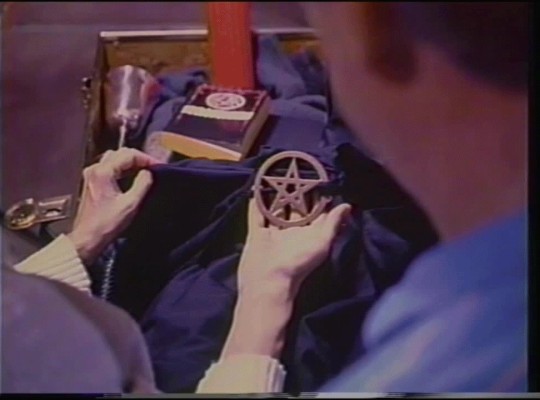

Warning Signs of Satanic Behavior. Training video for police, 1990
408K notes
·
View notes
Link
New viking finds are always exciting.
I guess the dragon and the guardian gnomelike svartalf buggered off to the Bahamas when they realized no one was coming for the treasure any time soon?
21 notes
·
View notes
